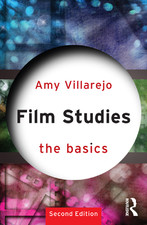Picked Flick #80: Blow-Up
 Whether or not Antonioni's protagonist unwittingly takes a snapshot of a dead body in a public park is only one of the questions at the nucleus of the film. Another is what it would mean if this body, this stranger's body, this body that doesn't look sufficiently like a body and doesn't have the habit of staying put, really did turn out to be a body. What would change? What would it mean? But there is yet a further question, equally central, and it virtually neutralizes all the others: what if these narrative riddles and cryptic implications are shadows of some greater enigma, some secret life of objects that keeps emerging, deliciously but somehow troublingly, in all of Antonioni's shots and scenes? Unlike, say, L'Avventura or L'Éclisse, Blow-Up is not about spaces but about forms and hard surfaces: the photographic equipment, the images themselves, the parti-colored fashion ensembles over which Carlo Di Palma's camera pans and glides so silkily, the rustling backdrop paper in the photo studio, the mottled floor on which Sarah Miles and her husband make love, the plane propeller purchased from the antique store, the Yardbirds' hilariously absconded guitar. Even the objects that go missing from the frame—the body, the tennis ball—continue to define their surrounding spaces rather than the other way around, except perhaps in the final shot, where the photographer himself evaporates into the grass. The seductive aesthetics of the movie, Antonioni's way of photographing everything so that all of it looks fascinating as well as concealing, mark a direct prelude to movies like Blue Velvet and Mulholland Drive, which prompt a constant stream of questions quite apart from the putative concerns of the plot. And yet the movie also feels remarkably self-contained, an exceptional case within Antonioni's own filmography, and within the mid-'60s "swinger" cinema that I have otherwise found so enervating (Lester, Schlesinger). As in the movie's entrancing, impeccably shot and edited sequence tracing the photographic enlargements, the images in Blow-Up itself keep suggesting larger scales, darker ramifications, and its sublimity of beauty and terror is of course the greater for leaving these questions unresolved. (Click here for the full list of Nick's Picked Flicks.)
Whether or not Antonioni's protagonist unwittingly takes a snapshot of a dead body in a public park is only one of the questions at the nucleus of the film. Another is what it would mean if this body, this stranger's body, this body that doesn't look sufficiently like a body and doesn't have the habit of staying put, really did turn out to be a body. What would change? What would it mean? But there is yet a further question, equally central, and it virtually neutralizes all the others: what if these narrative riddles and cryptic implications are shadows of some greater enigma, some secret life of objects that keeps emerging, deliciously but somehow troublingly, in all of Antonioni's shots and scenes? Unlike, say, L'Avventura or L'Éclisse, Blow-Up is not about spaces but about forms and hard surfaces: the photographic equipment, the images themselves, the parti-colored fashion ensembles over which Carlo Di Palma's camera pans and glides so silkily, the rustling backdrop paper in the photo studio, the mottled floor on which Sarah Miles and her husband make love, the plane propeller purchased from the antique store, the Yardbirds' hilariously absconded guitar. Even the objects that go missing from the frame—the body, the tennis ball—continue to define their surrounding spaces rather than the other way around, except perhaps in the final shot, where the photographer himself evaporates into the grass. The seductive aesthetics of the movie, Antonioni's way of photographing everything so that all of it looks fascinating as well as concealing, mark a direct prelude to movies like Blue Velvet and Mulholland Drive, which prompt a constant stream of questions quite apart from the putative concerns of the plot. And yet the movie also feels remarkably self-contained, an exceptional case within Antonioni's own filmography, and within the mid-'60s "swinger" cinema that I have otherwise found so enervating (Lester, Schlesinger). As in the movie's entrancing, impeccably shot and edited sequence tracing the photographic enlargements, the images in Blow-Up itself keep suggesting larger scales, darker ramifications, and its sublimity of beauty and terror is of course the greater for leaving these questions unresolved. (Click here for the full list of Nick's Picked Flicks.)Labels: 1960s, Favorites, Vanessa Redgrave

















0 Comments:
Post a Comment
<< Home